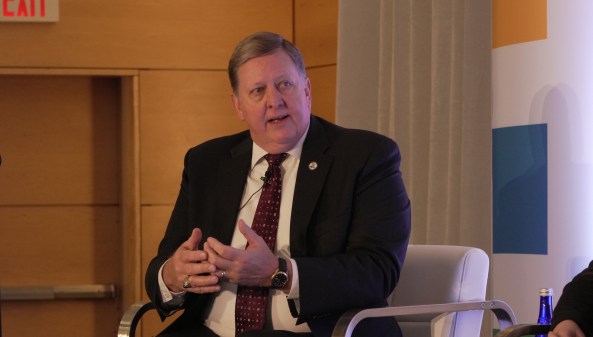Patent office may have paid examiners $18M for hours they didn’t work — IG

The Patent and Trademark Office paid its examiners more than $18 million for time they may not have worked, according to an investigation by the Commerce Department’s inspector general.
In a report investigating potential time and attendance abuse within the agency, IG researchers scoured examiners’ work records and determined that staff may not have worked more than 288,000 hours that they claimed to during a 15-month period. But at the same time, the analysis found that after the agency implemented a new telework policy in February 2015, full-time teleworkers reported a statistically significant three fewer minutes of “unsupported” work per day.
The analysis this week comes after the IG released a report last year that found an examiner had committed at least 730 hours of time and attendance fraud — and following a 2014 Washington Post article that raised questions about the agency’s telework program.
For the report, investigators looked at 8,400 of the office’s about 10,000 patent examiners. The investigators gathered turnstile records, virtual private network records and other data to figure what hours the examiners were at the headquarters, or logged into an agency network or laptop.
Then, researchers compared that to examiners’ time and attendance records to find discrepancies. The report said, “OIG generally interpreted the data in the light most favorable to the employees” and discrepancies actually could be twice as high.
The agency, responsible for issuing protections to inventors and companies for their inventions, has for years tried to cut into its a massive patent application backlog, which currently stands at 550,000. The report noted that “total unsupported hours could have reduced the patent application backlog by approximately 15,990 cases.”
Among the recommendations: The IG said the agency should have all teleworkers stay logged into USPTO network while they’re working — currently only full-time teleworkers face that requirement. The agency should also require that examiners give their supervisors their work schedules — right now, that’s only mandatory for low-performing workers.
In a statement posted online, USPTO Chief Communications Officer Patrick Ross noted that the figure made up a fraction of the total time worked.
“The OIG concluded that there was a lack of a digital footprint in approximately 2% of the total hours claimed by the patent examiners during the 15 month period — a percentage that continued to shrink following the introduction of new USPTO controls, and during the course of the IG review,” he said.
He said agencies would examine the report’s recommendations.
“The USPTO recognizes that there may be many reasons for the lack of a digital footprint and is committed to analyzing the recommendations offered by the OIG, continuing to conduct our own review, and, if needed, improving the extensive measures already implemented,” he said.
Following the release of the report, Senate Judiciary Committee leadership sent a letter to USPTO Director Michelle Lee Thursday, asking how the agency has worked to prevent time fraud and how it intends to use the IG report.
“We are confident that you share our belief that concerns about time and attendance at the PTO must be taken seriously, and that any potential abuses are addressed,” wrote committee Chairman Chuck Grassley, R-Iowa, and senior Democratic Sen. Patrick Leahy of Vermont.
Editor’s note: This story was updated to include information about the Senate Judiciary Committee’s letter.





